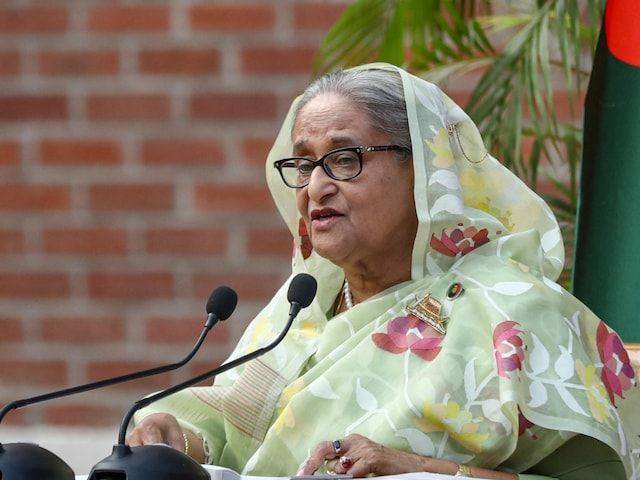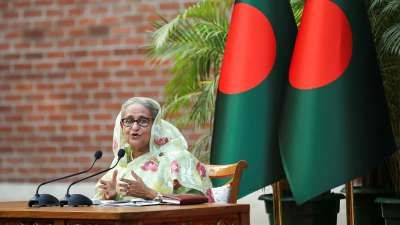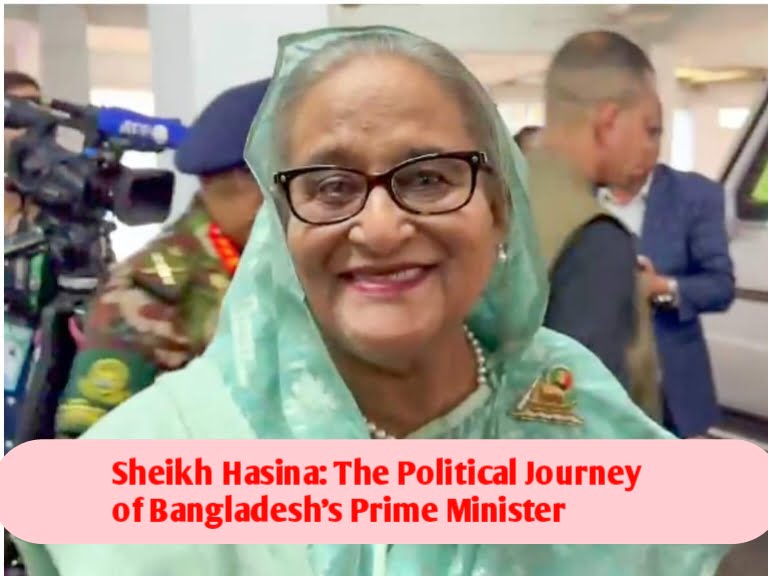Sheikh Hasina: The Political Journey of Bangladesh’s Prime Minister
Sheikh Hasina
Sheikh Hasina Wazed, commonly known as Sheikh Hasina, is one of the most influential political figures in Bangladesh. As the longest-serving Prime Minister in the country’s history, her leadership has significantly shaped the nation’s political, economic, and social landscape. This article provides a comprehensive overview of her life, political career, achievements, and challenges.
Early Life and Education
Sheikh Hasina was born on September 28, 1947, in Tungipara, a small village in the Gopalganj District of East Bengal (now Bangladesh). She is the daughter of Sheikh Mujibur Rahman, the founding father and first President of Bangladesh. Growing up in a politically active family, Hasina was deeply influenced by her father’s vision and leadership.
She pursued her education at the University of Dhaka, where she graduated with a degree in Bengali literature. Her academic background and early exposure to political activism laid the foundation for her future political career.
Political Career

- Entry into Politics Sheikh Hasina’s political career began in the turbulent period following Bangladesh’s independence in 1971. After the assassination of her father and most of her family members in a military coup on August 15, 1975, Hasina and her sister Sheikh Rehana, who were abroad at the time, were the only surviving members of her immediate family.
- Exile and Return Hasina lived in exile in India and the United Kingdom for six years. In 1981, she was elected the president of the Awami League, one of Bangladesh’s major political parties, while still in exile. She returned to Bangladesh later that year to assume her role and lead the party’s efforts to restore democracy in the country.
- Struggles and Achievements Hasina faced numerous challenges, including imprisonment and political persecution. Despite these obstacles, she played a crucial role in mobilizing opposition against military rule and advocating for democratic governance. Her perseverance paid off when the Awami League won a landslide victory in the 1996 general elections, making her Prime Minister for the first time.
- Terms as Prime Minister
- First Term (1996-2001): During her first term, Hasina focused on economic reforms, poverty alleviation, and improving education and healthcare. She also played a key role in signing the Ganges Water Treaty with India and the Chittagong Hill Tracts Peace Accord.
- Second Term (2009-2014): Hasina’s second term was marked by significant economic growth, infrastructure development, and efforts to combat terrorism and extremism. She also introduced policies to improve women’s rights and social welfare.
- Third Term (2014-2018): Her third term saw continued economic progress and major projects like the Padma Bridge. However, it was also marked by allegations of electoral irregularities and concerns about press freedom and human rights.
- Fourth Term (2018-present): Hasina’s current term has focused on sustainable development, technological advancements, and tackling the COVID-19 pandemic. Her government continues to face criticism over issues related to governance and democratic practices.
Achievements and Contributions

- Economic Growth Under Hasina’s leadership, Bangladesh has achieved remarkable economic growth, transitioning from a low-income to a middle-income country. Key sectors like textiles, agriculture, and information technology have seen substantial development.
- Social Reforms Hasina has championed numerous social reforms, including initiatives to improve gender equality, healthcare, and education. Her government has made significant strides in reducing poverty and enhancing social safety nets.
- Infrastructure Development Major infrastructure projects, such as the Padma Bridge, Dhaka Metro Rail, and expansion of energy resources, have been initiated to support the country’s growing economy and improve connectivity.
- International Relations Hasina has worked to strengthen Bangladesh’s diplomatic ties with neighboring countries and beyond. Her efforts have included resolving longstanding disputes and fostering regional cooperation.
Challenges and Criticisms
Reading more… Understanding the Global Market: An In-Depth Analysis
- Governance and Democracy Hasina’s government has faced criticism over issues related to governance, including allegations of corruption, electoral fraud, and suppression of political opposition.
- Human Rights Concerns have been raised about press freedom, judicial independence, and human rights under her administration. Reports of extrajudicial killings and enforced disappearances have drawn international attention.
- Rohingya Crisis The influx of Rohingya refugees from Myanmar has posed a significant humanitarian challenge for Bangladesh. While Hasina’s government has been praised for its humanitarian response, the long-term solution to the crisis remains elusive.
Conclusion
Sheikh Hasina’s political journey is marked by resilience, leadership, and a commitment to her father’s vision for Bangladesh. Her tenure has brought significant progress and development to the nation, despite facing numerous challenges and criticisms. As she continues to lead, her legacy will be shaped by her ability to navigate the complex political landscape and address the pressing issues facing Bangladesh today.
How did you like the information given in our article today, please tell us in the comment section and for more such posts, follow our page The News House, thank you
